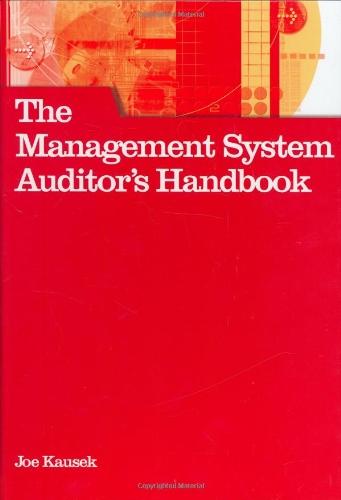Question
1. A company had beginning inventories as follows: Direct Materials, $300; Work-in-Process, $500; Finished Goods, $700. It had ending inventories as follows: Direct Materials, $400;
1.
A company had beginning inventories as follows: Direct Materials, $300; Work-in-Process, $500; Finished Goods, $700. It had ending inventories as follows: Direct Materials, $400; Work-in-Process, $600; Finished Goods, $800. Material Purchases (net including freight) were $1,400, Direct Labor $1,500, and Manufacturing Overhead $1,600. What is the Cost of Goods Sold for the period?
$4,100.
$4,200.
$4,300.
$4,400.
2.
The journal entry to record the completion of a job in a job costing system is:
| A. | Finished Goods Inventory | xxx | |
| Materials Inventory | xxx |
| B. | Work-In-Process Inventory | xxx | |
| Applied Manufacturing Overhead | xxx |
| C. | Manufacturing Overhead Control | xxx | |
| Finished Goods Inventory | xxx |
| D. | Finished Goods Inventory | xxx | |
| Work-In-Process Inventory | xxx |
Option A
Option B
Option C
Option D
3.
The following information pertains to Oklahoma Co.'s Tulsa Division for the month of April:
| Units | Materials | ||||||
| Beginning Work-in-Process | 15,000 | $ | 5,500 | ||||
| Started in April | 40,000 | $ | 18,000 | ||||
| Units completed | 42,500 | ||||||
| Ending Work-in-Process | 12,500 | ||||||
All materials are added at the beginning of the process. Using the weighted-average method, the cost per equivalent unit of materials is: (CPA adapted)
$0.59.
$0.55.
$0.45.
$0.43.
4.
The Finishing Department had 5,000 incomplete units in its beginning Work-in-Process Inventory which were 100% complete as to materials and 30% complete as to conversion costs. 15,000 units were received from the previous department. The ending Work-in-Process Inventory consisted of 2,000 units which were 50% complete as to materials and 30% complete as to conversion costs. The Finishing Department uses first-in, first-out (FIFO) process costing. What are the equivalent units of production for the conversion costs during the period?
14,500.
15,100.
16,500.
17,100.
5.
Banc Corp. Trust is considering either a bankwide overhead rate or department overhead rates to allocate $396,000 of indirect costs. The bankwide rate could be based on either direct labor hours (DLH) or the number of loans processed. The departmental rates would be based on direct labor hours for Consumer Loans and a dual rate based on direct labor hours and the number of loans processed for Commercial Loans. The following information was gathered for the upcoming period:
| Department | DLH | Loans Processed | Direct Costs | ||||
| Consumer | 14,000 | 700 | $ | 280,000 | |||
| Commercial | 8,000 | 300 | $ | 180,000 | |||
| | |||||||
Banc Corp. Trust estimates that it costs $500 to analyze and close a commercial loan. This amount has been included in the $396,000 of indirect costs. How much of the $396,000 indirect costs should be allocated to the Consumer Department?
Allure Company manufactures and distributes two products, M and XY. Overhead costs are currently allocated using the number of units produced as the allocation base. The controller has recommended changing to an activity-based costing (ABC) system. She has collected the following information:
| Activity | Cost Driver | Amount | M | XY | ||||
| Production setups | Number of setups | $ | 82,000 | 8 | 12 | |||
| Material handling | Number of parts | 48,000 | 56 | 24 | ||||
| Packaging costs | Number of units | 130,000 | 80,000 | 50,000 | ||||
| $ | 260,000 | |||||||
| | ||||||||
What is the total overhead allocated to Product XY using the current system?
Step by Step Solution
There are 3 Steps involved in it
Step: 1

Get Instant Access to Expert-Tailored Solutions
See step-by-step solutions with expert insights and AI powered tools for academic success
Step: 2

Step: 3

Ace Your Homework with AI
Get the answers you need in no time with our AI-driven, step-by-step assistance
Get Started


